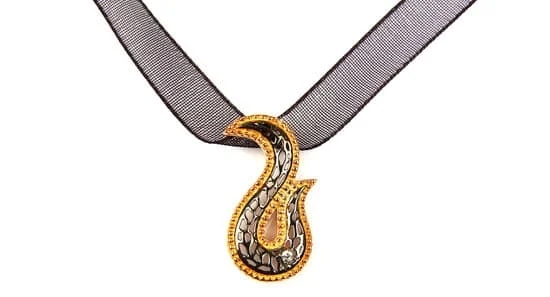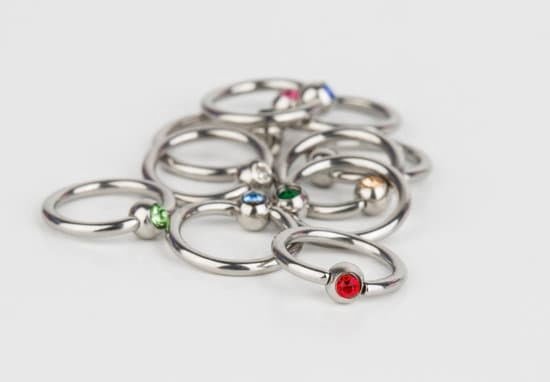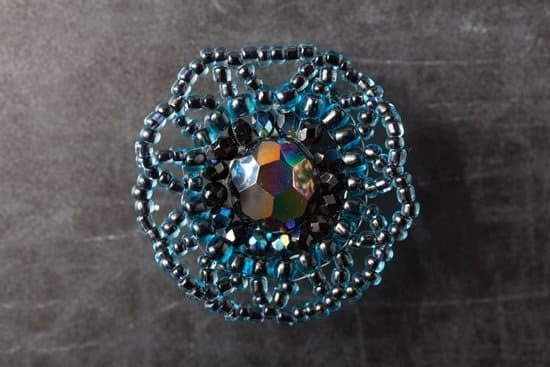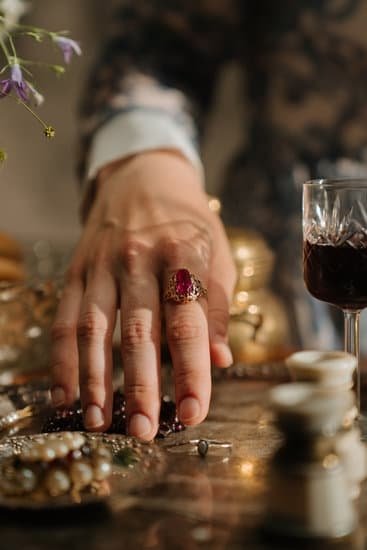For over 180 years, Tiffany & Co. has been at the forefront of luxury jewelry and iconic designs. The history of Tiffany jewelry is a tale of innovation, elegance, and enduring legacy in the world of fashion and accessories. From its humble beginnings to its current status as a global powerhouse, Tiffany & Co. has continuously shaped the landscape of the jewelry industry.
Founded in 1837 in New York City by Charles Lewis Tiffany and John B. Young, Tiffany & Co. started as a “stationery and fancy goods emporium” with a focus on stationary items. However, it quickly transitioned into the fine jewelry realm, setting itself apart with exquisite pieces that caught the attention of New York’s elite society.
Throughout its history, Tiffany & Co. has established itself as a trendsetter in jewelry design, introducing iconic pieces such as their engagement ring settings and signature collections that have stood the test of time. The brand’s commitment to craftsmanship and quality has solidified its reputation as one of the most prestigious jewelry houses globally.
As we delve deeper into the history of Tiffany jewelry in this article, we will explore its early years, evolution of designs, notable pieces and endorsements, impact on the industry, iconic packaging, and modern-day success – shedding light on how Tiffany & Co. continues to maintain its position as an influential player in the world of luxury jewelry.
The Early Years
Tiffany & Co. was founded in 1837 by Charles Lewis Tiffany and John B. Young in New York City. The company initially operated as a “stationery and fancy goods emporium,” offering a wide range of high-quality products including stationary, silverware, and jewelry. However, it wasn’t until 1853 when Charles Tiffany took control of the firm and transformed it into a jewelry-focused business, that the company began to gain recognition for its exceptional craftsmanship and innovative designs.
Establishment of Tiffany & Co.
The establishment of Tiffany & Co. marked a significant shift in the jewelry industry, as the brand set out to redefine standards of luxury and elegance. The company’s commitment to sourcing only the finest diamonds and gemstones, combined with unparalleled artistry, quickly propelled them to prominence within the elite social circles of New York City.
Founder’s Vision
Charles Lewis Tiffany’s vision for the brand was centered around creating timeless pieces that transcended passing trends or fads. This dedication to crafting enduring designs laid the foundation for Tiffany & Co.’s lasting influence on the world of jewelry.
The early years of Tiffany & Co. not only laid the groundwork for their future success but also set a precedent for other jewelers to strive for excellence in design and craftsmanship. Their commitment to quality and innovation would continue to shape the history of Tiffany jewelry for generations to come.
Evolution of Tiffany Jewelry Designs Throughout History
Tiffany & Co. has a rich and storied history that dates back to its founding in 1837. Throughout its long and illustrious existence, the brand has become synonymous with timeless elegance and exquisite craftsmanship, particularly in the realm of jewelry. The evolution of Tiffany jewelry designs throughout history reflects the changing tastes and styles of each era, while maintaining the brand’s signature sophistication and quality.
Early Inspirations and Designs
In its early years, Tiffany & Co. drew inspiration from a variety of sources, including nature, art, and global cultures. This eclectic approach led to the creation of unique and innovative designs that set the brand apart from its contemporaries. One notable example is the introduction of the Tiffany Setting engagement ring in 1886, which revolutionized the way diamonds were set in rings and remains an iconic design to this day.
Art Deco Influence
The Art Deco movement of the 1920s and 1930s had a profound impact on Tiffany jewelry designs during this period. Characterized by geometric shapes, bold colors, and intricate patterns, Art Deco-inspired pieces from Tiffany & Co. showcased a blend of modernity and glamour that captivated fashion-forward clientele. This era marked a shift towards more streamlined and stylized designs that reflected the spirit of the time.
Contemporary Innovations
As Tiffany & Co. entered into the late 20th century and beyond, its jewelry designs continued to evolve in response to changing trends and preferences. Collaborations with renowned designers such as Elsa Peretti and Paloma Picasso brought fresh perspectives to the brand, resulting in collections that appealed to a diverse range of consumers. With an emphasis on versatility and contemporary aesthetics, these collaborations further solidified Tiffany & Co.’s position as a leader in luxury jewelry design.
Throughout its history, Tiffany & Co.’s jewelry designs have continuously adapted to reflect the artistic movements and societal changes of each era while maintaining timeless appeal. From classic diamond engagement rings to avant-garde creations, the brand’s commitment to innovation continues to shape the future of luxury jewelry design.
Notable Tiffany Jewelry Pieces and Their Significance
Tiffany & Co. has been responsible for creating many iconic jewelry pieces that have become synonymous with luxury and sophistication. One of the most famous pieces is the Tiffany Setting engagement ring, which was introduced in 1886. This innovative design elevated the diamond above the band, allowing it to capture more light and sparkle with unparalleled brilliance. The Tiffany Setting revolutionized the way engagement rings were designed and set a new standard for beauty and elegance.
Another notable piece from the history of tiffany jewelry is the Tiffany Yellow Diamond. Discovered in South Africa in 1877, this stunning 128.54-carat gemstone was cut into a cushion shape and placed in a simple bezel setting by the renowned jeweler Jean Schlumberger. The Tiffany Yellow Diamond gained worldwide fame when Audrey Hepburn wore it for publicity photos for the film “Breakfast at Tiffany’s,” cementing its status as one of the most famous diamonds in the world.
The Paloma Picasso collection is also an important part of tiffany jewelry history. Introduced in 1980, this collaboration between designer Paloma Picasso and Tiffany & Co. brought a bold and modern aesthetic to the brand’s offerings. The collection features geometric shapes, vibrant colors, and unconventional materials, reflecting Picasso’s unique artistic vision while adding a new dimension to Tiffany’s designs.
| Jewelry Piece | Significance |
|---|---|
| Tiffany Setting Engagement Ring | Revolutionized engagement ring design |
| Tiffany Yellow Diamond | Became famous after being worn by Audrey Hepburn |
| Paloma Picasso Collection | Added a bold and modern aesthetic to Tiffany & Co.’s offerings |
Famous Celebrity Endorsements of Tiffany Jewelry
Tiffany & Co. has a rich history of being associated with some of the biggest names in Hollywood and the fashion industry. The brand has been worn by countless celebrities on the red carpet, in movies, and during high-profile events, solidifying its status as a symbol of luxury and elegance.
Over the years, iconic figures such as Audrey Hepburn, Elizabeth Taylor, and Grace Kelly have famously adorned themselves with Tiffany jewelry in various films and public appearances. One of the most memorable instances is Audrey Hepburn’s character Holly Golightly wearing the stunning pearl necklace in the classic film “Breakfast at Tiffany’s,” which further propelled the brand into popular culture.
In recent times, celebrities like Angelina Jolie, Lady Gaga, and Reese Witherspoon have also been spotted wearing Tiffany & Co. pieces at major award shows and premieres. In 2018, singer Beyoncé notably wore an elaborate diamond necklace from Tiffany while attending the Grammy Awards, drawing attention to the brand’s timeless allure.
Tiffany’s association with these influential personalities has contributed to its enduring appeal and cultural significance throughout different eras. The brand’s ability to capture the attention of A-list celebrities speaks volumes about its reputation for producing exquisite and iconic jewelry that transcends generations.
| Celebrity | Notable Tiffany Jewelry Piece |
|---|---|
| Audrey Hepburn | Pearl necklace in “Breakfast at Tiffany’s” |
| Beyoncé | Diamond necklace at Grammy Awards |
| Lady Gaga | Tiffany Blue Book Collection diamond necklace |
Tiffany & Co’s Impact on the Jewelry Industry
Throughout its storied history, Tiffany & Co. has made a significant impact on the jewelry industry. From its revolutionary designs to its innovative business practices, the brand has continually set the standard for excellence in the world of luxury jewelry.
Some key ways that Tiffany & Co. has influenced the jewelry industry include:
- Setting new trends: Tiffany & Co. has been at the forefront of setting new trends in jewelry design. From introducing the Tiffany Setting engagement ring in 1886 to creating iconic pieces such as the Tiffany T collection, the brand has consistently raised the bar for innovative and timeless designs.
- Advancing ethical and sustainable practices: In recent years, Tiffany & Co. has taken a leadership role in promoting ethical and sustainable practices within the jewelry industry. The brand was among the first to embrace responsible sourcing of diamonds and precious metals, and it continues to advocate for greater transparency and accountability throughout the supply chain.
- Elevating customer experience: Beyond its extraordinary jewelry creations, Tiffany & Co. has also redefined the retail experience for customers. The brand’s commitment to exceptional craftsmanship, personalized service, and luxury presentation has set a new standard for what customers can expect when purchasing fine jewelry.
Overall, Tiffany & Co.’s influence on the jewelry industry extends far beyond its well-known blue boxes and iconic designs. From its commitment to quality and innovation to its advocacy for ethical practices, the brand continues to shape and elevate the world of luxury jewelry.
Tiffany’s Blue Box
Tiffany & Co. is not only renowned for its exquisite jewelry, but also for its iconic blue packaging. The little blue box has become synonymous with luxury and romance, making it an integral part of the brand’s identity.
The history of the Tiffany blue box dates back to the 19th century, when the founder, Charles Lewis Tiffany, decided to use the distinctive shade of robin’s egg blue for their boxes. This decision was groundbreaking at the time and set Tiffany & Co. apart from other jewelers.
The iconic packaging became even more famous when it was featured in the 1961 film “Breakfast at Tiffany’s,” starring Audrey Hepburn. The movie showcased the allure of Tiffany jewelry along with its unmistakable packaging, further solidifying its status as a symbol of sophistication and elegance. Even today, receiving a gift in a Tiffany blue box is considered a special and prestigious experience.
The significance of the Tiffany blue box goes beyond just being an attractive presentation. It represents not only luxury but also quality and excellence. Customers recognize that when they see that trademark color, they are about to discover something truly exceptional inside. Over time, the packaging has become an integral part of Tiffany & Co.’s brand image, adding value to their products and creating a lasting impression on customers worldwide.
- Evolution of the iconic blue box
- Stories behind some famous instances where celebrities received or presented Tiffany’s Blue Boxes.
- Recreating a legendary legacy: how Tiffany continues to maintain this tradition
The Modern Era
Tiffany & Co. has continued to thrive in the 21st century, despite facing challenges and changes in the jewelry industry. The company has expanded its reach globally, opening new stores in major cities around the world and strengthening its online presence to cater to a wider audience. With its commitment to quality craftsmanship and timeless designs, Tiffany & Co. has maintained its status as a leader in the luxury jewelry market.
In 2000, Tiffany & Co. appointed designer Francesca Amfitheatrof as its first female design director, signaling a shift towards more modern and innovative jewelry collections. This move garnered widespread attention and brought fresh perspectives to the brand’s design aesthetic. Furthermore, the company’s collaboration with renowned artists and designers like Elsa Peretti and Paloma Picasso has resulted in unique and iconic jewelry pieces that have appealed to new generations of consumers.
Tiffany & Co.’s success in the 21st century can also be attributed to its strategic marketing efforts and celebrity endorsements. The brand has partnered with high-profile figures such as Lady Gaga, Beyoncé, and Elle Fanning, who have been spotted wearing Tiffany jewelry at major events.
Additionally, the release of campaigns featuring diverse narratives has resonated with a more inclusive audience, further solidifying Tiffany & Co.’s relevance in today’s culturally dynamic landscape. As a result, the brand’s sales have continued to flourish both domestically and internationally, cementing its position as a timeless icon within the jewelry industry.
Conclusion
In conclusion, the history of Tiffany jewelry is not only a testament to the brand’s enduring legacy but also a reflection of its impact on the jewelry industry. From its humble beginnings in 1837, Tiffany & Co. has consistently set the standard for luxury and elegance in jewelry design. The brand’s commitment to quality craftsmanship and innovative designs has solidified its position as a leader in the world of fine jewelry.
Throughout its long history, Tiffany & Co. has been responsible for creating some of the most iconic and timeless pieces of jewelry. From the legendary Tiffany Setting engagement ring to the stunning designs by Jean Schlumberger and Elsa Peretti, the brand’s creations have become synonymous with sophistication and glamour. Not to mention, the famous blue box packaging has become an iconic symbol of luxury and romance, further adding to the allure of Tiffany jewelry.
With its continued success and expansion into international markets, Tiffany & Co. remains a global powerhouse in the world of jewelry. Its influence can be seen not only in its exquisite designs but also in its ability to capture the hearts of celebrities and customers alike.
As we look back on the history of Tiffany jewelry, it is clear that the brand’s legacy will continue to shine brightly for generations to come, solidifying its status as a true pioneer in luxury jewelry.
Frequently Asked Questions
What Is the Origin of Tiffany Jewelry?
Tiffany jewelry has its origins in New York City, where the world-renowned brand was founded in 1837 by Charles Lewis Tiffany and John B. Young. The company originally started as a “stationery and fancy goods emporium” before it became known for its luxurious jewelry.
What Is So Special About Tiffany Jewelry?
There are several aspects that make Tiffany jewelry special. Firstly, the brand’s commitment to using only high-quality materials such as sterling silver and 18k gold ensures that every piece is crafted with precision and care. In addition, their designs are timeless, elegant, and often incorporate stunning diamonds and gemstones.
Why Is Tiffany’s So Famous?
Tiffany’s has become famous for several reasons, one of which is its iconic blue box packaging that is instantly recognizable worldwide. Beyond this, the brand has gained fame for its association with glamour and luxury, appealing to a wide range of customers including celebrities, royalty, and discerning jewelry connoisseurs.
Their reputation for quality and craftsmanship also contributes to their worldwide renown.

Welcome to my jewelry blog! My name is Sarah and I am the owner of this blog.
I love making jewelry and sharing my creations with others.
So whether you’re someone who loves wearing jewelry yourself or simply enjoys learning about it, be sure to check out my blog for insightful posts on everything related to this exciting topic!





